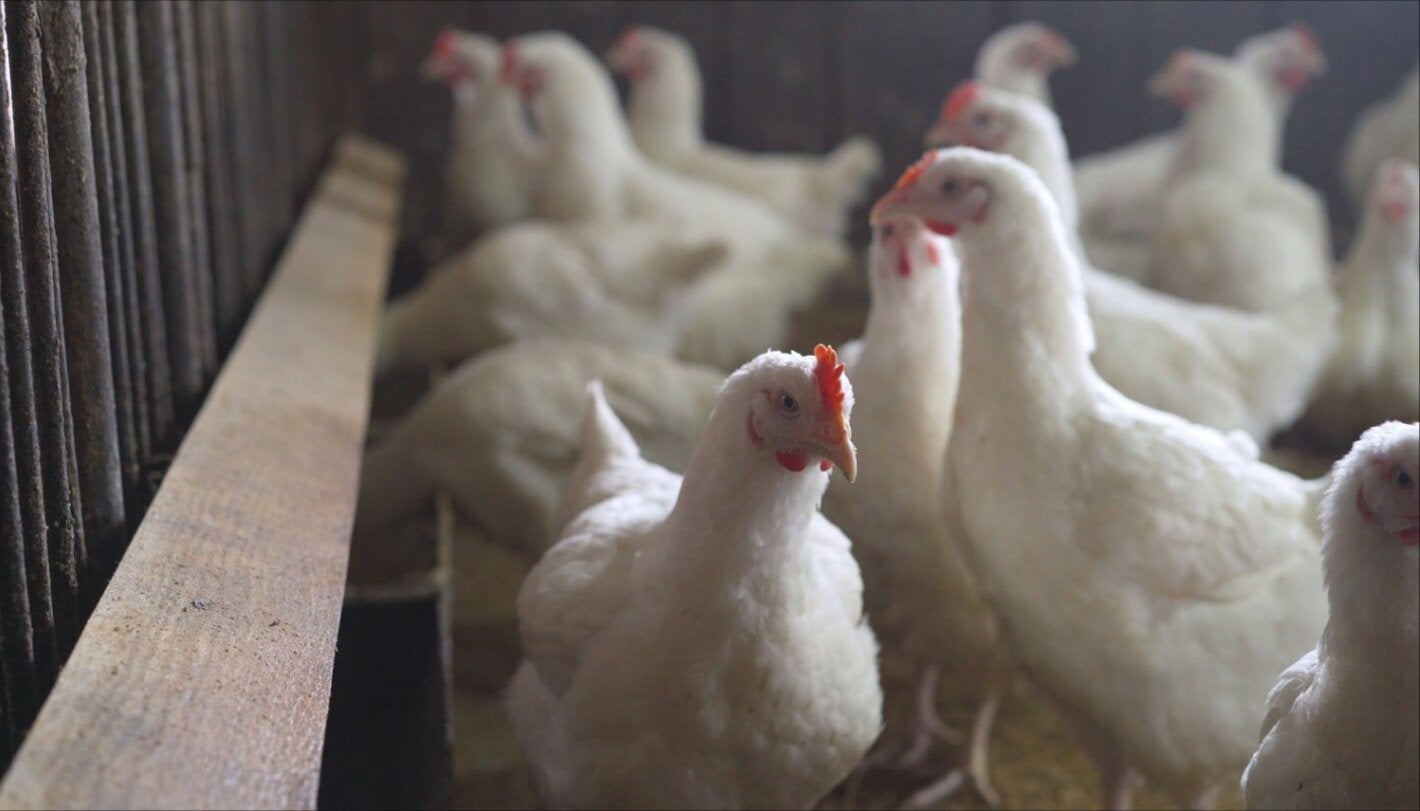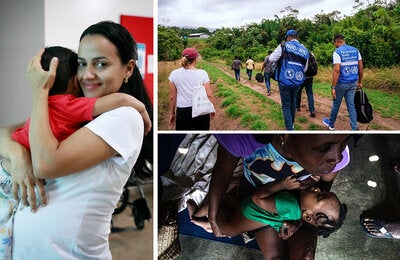
"The avian influenza epidemic poses a real threat to animals and a potential threat to humans."
July 2023 (PAHO/WHO)—In January this year, the Pan American Health Organization (PAHO) warned about outbreaks of highly pathogenic avian influenza in birds in countries of the Americas. For the first time, a human case of avian influenza A (H5N1) was also confirmed in a Latin American country. Since then, 16 countries have reported cases in birds and other animals and, until the first week of July 2023, two countries have confirmed human infections.
We spoke to Dr Ottorino Cosivi, Director of PAHO's Pan American Centre for Foot and Mouth Disease and Veterinary Public Health (PANAFTOSA), based in Rio de Janeiro, about the avian influenza epidemic in the region, and about the need for a coordinated response between veterinary and public health services. We also discussed prevention and control strategies in domestic poultry to mitigate the risk of virus transmission to humans.
What is the current avian influenza situation in the region?
Since 2022, the Americas region has been experiencing an epidemic of highly pathogenic avian influenza in animals associated with subtype A(H5N1). This virus belongs to a group of viruses (called clade 2.3.4.4b) with similar genetic mutations to the virus seen in late 2021 and throughout 2021 in Asia, Africa, Europe and the Middle East. It was also detected in North America later that year.
The epidemic has resulted in high morbidity and mortality among domestic birds, such as hens and chickens, and in wild birds, posing a real threat to animals and a potential threat to humans. As of the first week of July, 16 countries in Latin America and the Caribbean have reported cases of A(H5N1) in animals. While cases of highly pathogenic influenza have been reported in previous years, particularly in North America, an outbreak of this magnitude has never occurred before in the region.
Is there concern that the virus is spreading among animals other than birds?
The occurrence of cases of A(H5N1) in both mammals and wild and domestic animals is worrying and unusual. The main concern is that the virus shows adaptability to different species, particularly mammals that may be biologically closer to humans. It is therefore crucial that existing national, regional and global influenza surveillance systems closely monitor circulating viruses in these animals in order to detect possible changes and adaptability for human transmission. This also applies to other avian influenza subtypes, not just A(H5N1), as well as other zoonotic influenzas such as swine flu.
Why is animal surveillance and early detection of cases important?
Adequate surveillance for the presence of avian influenza in birds allows us to know which subtypes of influenza are in circulation. It also enables us to detect the presence of viruses with a more marked zoonotic character, i.e. possibly presenting changes that can result in greater adaptability for transmission in humans, which is important for public health. Early detection also allows countries to implement rapid response actions to mitigate the risk of virus transmission to humans.
Do birds or other animals with avian influenza need to be culled?
The culling of domestic poultry is one of the strategies recommended by both the World Organization for Animal Health (WOAH) and the Food and Agriculture Organization of the United Nations (FAO) in order to control and eradicate the virus before it spreads further. However, this is not the only tool. It is also important to properly quarantine animals, restrict animal movements, reinforce biosecurity protocols and carry out intensive surveillance in areas close to an outbreak. There is no one-size-fits-all set of measures for all countries. Each response must be tailored to the animal population, the epidemiological context and the availability of other control actions, particularly in the case of high economic value animals.
Some countries around the world were already vaccinating poultry before this outbreak and others have begun vaccination against avian influenza this year. Is vaccination for animals recommended?
Vaccination against avian influenza in birds is a tool that can help reduce disease incidence and mortality, and help to control transmission. However, in order to implement this strategy, countries must select the most appropriate vaccine for the type of virus in circulation, define the vaccination strategy (e.g. whether it is emergency or preventive vaccination), establish the animal population to be vaccinated, and ensure adequate monitoring of this population to detect any possible transmission, as well as surveillance to detect changes in the virus itself.
PANAFTOSA works directly with veterinary services in countries. How do you coordinate your work with human health authorities?
Coordination between animal and public health officials on avian influenza is crucial. Alongside the Infectious Threat Management Unit in PAHO's Health Emergencies Department, we promote intersectoral work at the human-animal interface through regional recommendations and the provision of technical assistance to countries.
What is the risk of human-to-human transmission of avian influenza?
Whenever avian influenza viruses circulate in poultry, wild birds or mammals, there is a risk of sporadic human infection and small clusters of cases through exposure to infected animals or contaminated environments. So far, human cases of avian influenza associated with this A(H5N1) are isolated. Three A(H5N1) human infections have been reported so far in the Region: in the United States (April 2022), Ecuador (January 2023) and Chile (March 2023). Human-to-human transmission was not identified in any of these cases. However, it is essential to maintain and strengthen surveillance, as we cannot ignore the risk of a potential pandemic arising from an avian influenza virus.
What does PANAFTOSA recommend to countries to prevent or control outbreaks of avian influenza in animals?
Countries need to have a thorough, updated contingency plan for outbreaks. Specific recommendations for these plans can be obtained from organizations such as FAO and WOAH. Teams involved in surveillance and response to animal influenza must be trained to implement these plans in case of emergency and should be provided with the necessary resources to do this. It is also key that poultry producers reinforce biosecurity in their facilities, preventing contact between domestic poultry and wild birds, including through water and feed. Farmers also play a key role in the early detection of the disease and need to be able to recognize and report it to the veterinary authorities so that avian influenza can be ruled out or confirmed and appropriate action taken. Early detection facilitates a timely response, thus helping to reduce the spread of the virus. Individuals or families keeping birds for personal consumption should also be well informed on how to recognize an infected bird, what measures to take, and how to protect themselves adequately.
What can be done to prevent and reduce the risk of people becoming infected?
Controlling avian influenza in birds is one way to mitigate the risk of transmission to humans. Any worker handling wild or domestic birds should have adequate biosecurity and biosafety knowledge . We recommend that veterinary authorities work in partnership with the public health sector to train all those involved in poultry production, as well as those working with wildlife. In addition to knowing the protocols, workers should also have appropriate protective equipment for handling birds, including specific protective clothing designated for these tasks, as well as gloves and a mask. If a person comes across a dead, dying or sick wild or domestic bird, they should avoid touching or handling it and report it to the official veterinary services immediately.
What is PAHO doing?
PAHO works with countries in the region and other agencies to strengthen avian influenza virus surveillance in birds and humans, and provides technical assistance for the timely detection, treatment and investigation of avian influenza A(H5N1) virus infection in humans. The organization also works to strengthen laboratory capacity in national veterinary and public health services so that they have the diagnostic capability to identify the presence of the avian influenza virus and detect changes in its genetic make-up.




